Hussmann HGM-3BS is a self-contained, medium temperature, vertical glass door merchandiser designed for the display of dairy products, deli items, beverages, and wine. Design features include self-closing glass doors, efficient foamed in place non-CFC insulation, and balanced R-134a refrigeration systems for energy saving performance. It has an electrically heated condensate pan to evaporate the defrost water and a vinyl drain tube for connection to the heated condensate pan. The cabinet is provided with 4 cantilever shelves per door that are adjustable on 1-inch increments and are tiltable.
Hussmann HGM-3BS is a self-contained, medium temperature, vertical glass door merchandiser designed for the display of dairy products, deli items, beverages, and wine. Design features include self-closing glass doors, efficient foamed in place non-CFC insulation, and balanced R-134a refrigeration systems for energy saving performance. It has an electrically heated condensate pan to evaporate the defrost water and a vinyl drain tube for connection to the heated condensate pan. The cabinet is provided with 4 cantilever shelves per door that are adjustable on 1-inch increments and are tiltable.




















-
 1
1
-
 2
2
-
 3
3
-
 4
4
-
 5
5
-
 6
6
-
 7
7
-
 8
8
-
 9
9
-
 10
10
-
 11
11
-
 12
12
-
 13
13
-
 14
14
-
 15
15
-
 16
16
-
 17
17
-
 18
18
-
 19
19
-
 20
20
-
 21
21
-
 22
22
-
 23
23
Hussmann HGM-3BS Installation guide
- Type
- Installation guide
- This manual is also suitable for
Hussmann HGM-3BS is a self-contained, medium temperature, vertical glass door merchandiser designed for the display of dairy products, deli items, beverages, and wine. Design features include self-closing glass doors, efficient foamed in place non-CFC insulation, and balanced R-134a refrigeration systems for energy saving performance. It has an electrically heated condensate pan to evaporate the defrost water and a vinyl drain tube for connection to the heated condensate pan. The cabinet is provided with 4 cantilever shelves per door that are adjustable on 1-inch increments and are tiltable.
Ask a question and I''ll find the answer in the document
Finding information in a document is now easier with AI
Related papers
-
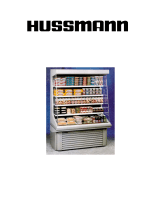 Hussmann GSVM User manual
Hussmann GSVM User manual
-
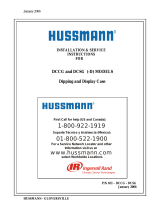 Hussmann DCSG User manual
Hussmann DCSG User manual
-
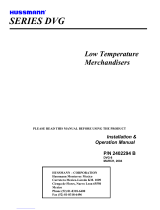 Hussmann DVG-8 Installation & Operation Manual
Hussmann DVG-8 Installation & Operation Manual
-
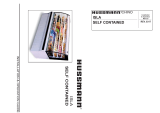 Hussmann ISLA IM-05-I4-S Installation & Operation Manua
Hussmann ISLA IM-05-I4-S Installation & Operation Manua
-
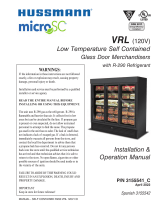 Hussmann VRL-B1A Installation & Operation Manual
Hussmann VRL-B1A Installation & Operation Manual
-
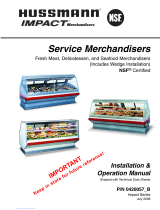 Hussmann P/N 0420057_B User manual
Hussmann P/N 0420057_B User manual
-
Hussmann Proto-Aire EZ Operating instructions
-
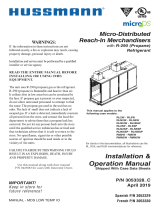 Hussmann RM2W Installation & Operation Manual
Hussmann RM2W Installation & Operation Manual
-
Hussmann BCH Installation guide
Other documents
-
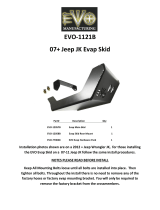 EVO Manufacturing EVO-1121B Installation guide
EVO Manufacturing EVO-1121B Installation guide
-
International comfort products PHD442000K000F Installation guide
-
Oasis C3Z4867.5884A User manual
-
Carrier 50VL---A User manual
-
 VENDO V21 User manual
VENDO V21 User manual
-
MULTIPLEX MB000A02 Technician's Handbook
-
hussman MPC-ETN Owner's manual
-
Bryant 607C-A User manual
-
Bryant 604D--A User manual
-
hussman CR3HV-NB Installation guide































